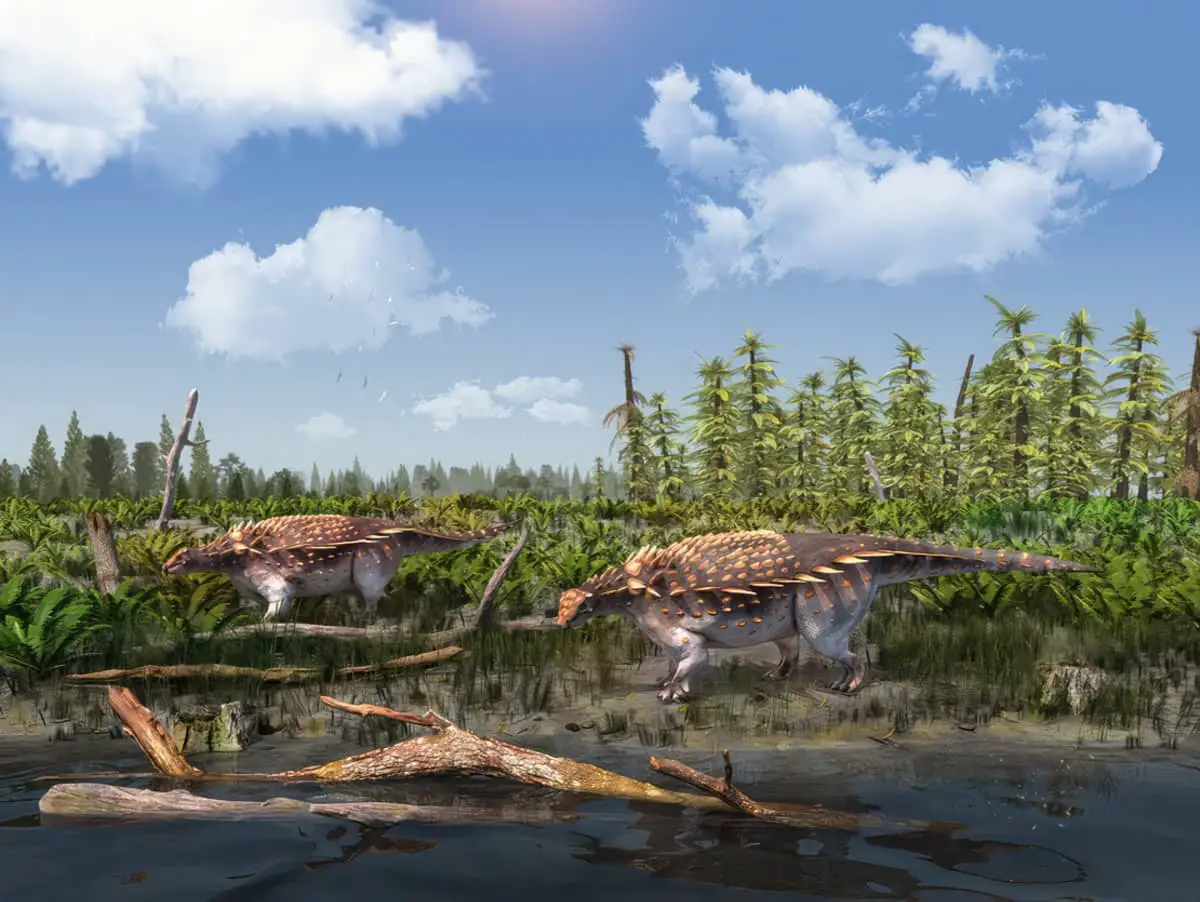The fossilised remains of a newly discovered dinosaur have been unveiled at the Isle of Wight’s premier family dinosaur attraction in Sandown.
Vectipelta barretti is the first new type of armoured dinosaur, known as an ankylosaur, to be uncovered on the ‘dinosaur isle’ in more than 140 years.
Parts of the dinosaur have gone on display at Dinosaur Isle today (Friday).
Discovered at Chilton Chine
The remains were discovered at Chilton Chine from rocks that form part of the Wessex Formation, laid down over 125 million years ago during the Early Cretaceous period.
The bones were cleaned from their surrounding matrix by staff and volunteers at the museum which has made the research possible.
Pond: Must revisit previous finds
Lead author Stuart Pond explained the importance of this find,
“This is an important specimen because it sheds light on ankylosaur diversity within the Wessex formation and Early Cretaceous England.
“For virtually 142 years, all ankylosaur remains from the Isle of Wight have been assigned to Polacanthus foxii, a famous dinosaur from the Island, now all of those finds need to be revisited because we’ve described this new species.”
Difference in key characteristics
The new species differs from Polacanthus foxii in several key characteristics.
The fossilised remains show differences in the neck and back vertebrae, a very different structure to the pelvis and more blade-like spiked armour.
Using phylogenetic analysis
The researchers used phylogenetic analysis to work out the relationships between different ankylosaurs and discovered they are not actually very closely related.
In fact, Vectipelta was found to be most closely related to some Chinese ankylosaurs, suggesting dinosaurs moved freely from Asia to Europe in the Early Cretaceous.
The Island’s Mediterranean climate
Dr Martin Munt, Dinosaur Isle curator, said,
“At the time the Isle of Wight would have had a climate similar to that of the Mediterranean and was a flood plain covered by a large meandering river system.
“Floods would have washed organic material such as plants, logs and even dinosaur bodies together and, as waters receded, this organic matter would have been isolated in ponds on the floodplain that eventually dried out and were buried in the clay soil, preserving this organic material as the fossils we find today.”
Honouring Prof Paul Barrett
The new dinosaur has been named to honour Prof Paul Barrett, a world-leading authority on dinosaurs who has worked at the Natural History Museum, London, for more than 20 years.
The impressive geology and fossil collection held at Dinosaur Isle is second only in importance to that held by the Natural History Museum itself.
It’s where visitors can marvel at the fossilised remains of the largest meat-eating dinosaur ever found in Europe, which once prowled the beaches of what is now the Isle of Wight.
Dinosaur Island
The Island is well known for its wealth of dinosaur fossils.
Over the past 200 years, a whole menagerie of ancient animals has been found on the Island, from sauropods to theropods, with more species being unearthed on a regular basis.
Why not join one of the museum’s popular fossil walks led by experienced staff who can advise on the fascinating geology and palaeontology of the area.
For more information, visit the Website.
The paper ‘Vectipelta barretti, a new ankylosaurian dinosaur from the Lower Cretaceous Wessex Formation of the Isle of Wight, UK’ is published in the Journal of Systematic Palaeontology.
News shared by Isle of Wight council press office, in their own words. Ed





